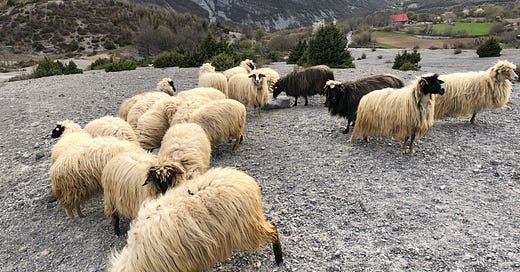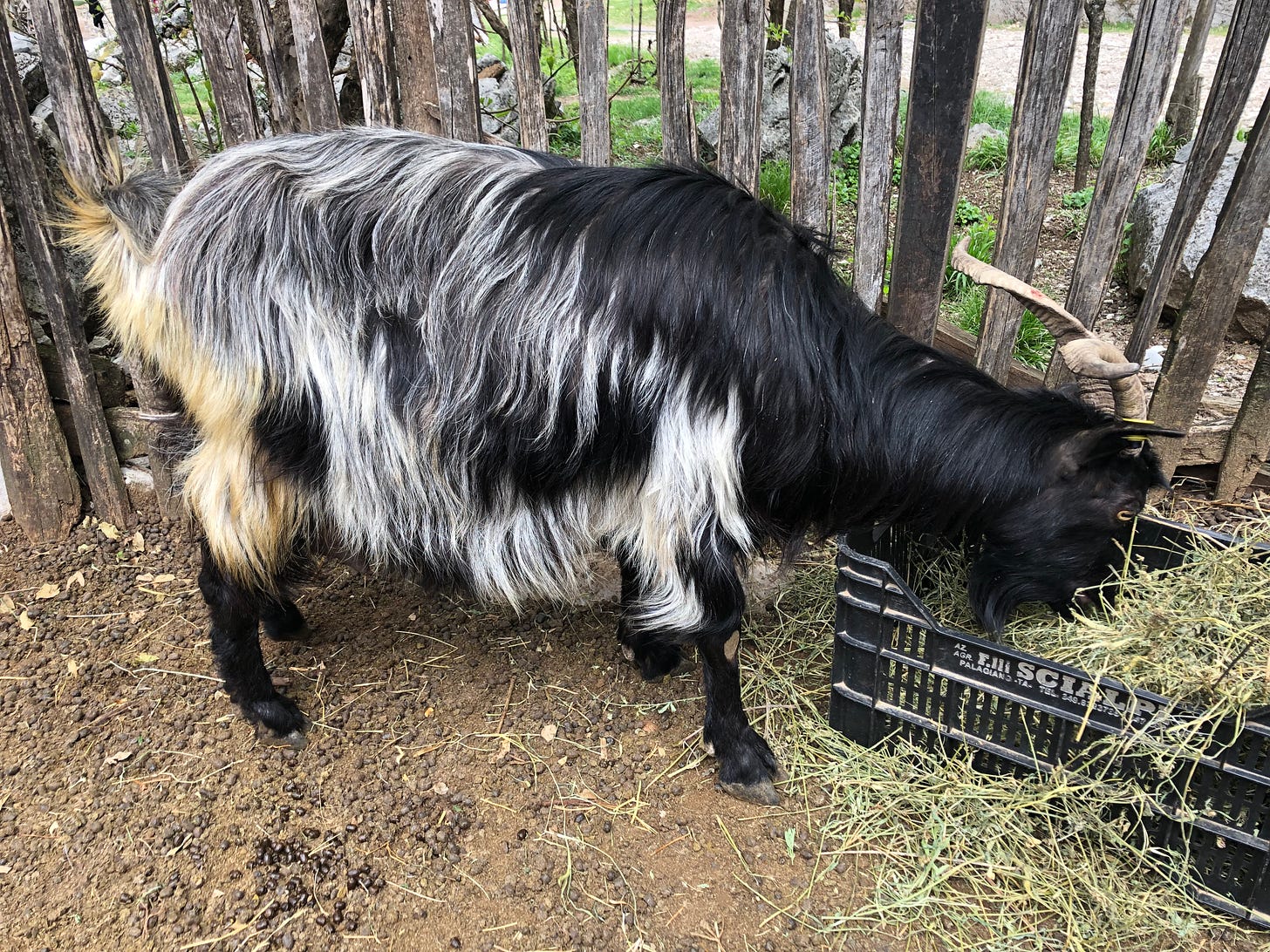There exists a human tendency to place things into categories of our own creation -and then forget that we created them. These categories can be useful, but don’t necessarily reflect nature, which often defies categorization. I feel it is important to acknowledge that not only are things not black and white, but all named colors are limitations placed on an intangible rainbow. These culturally defined named colors allow us to describe our visual world, and communicate with each other with more or less nuance. A major part of what I hope to bring to the conversation about milk microbes, cheese styles, grazing systems, and livestock breeds is that the global diversity of these things is difficult to categorize. We should probably name more colors, and admit that these categories are invented, cultural constructs.
Our western belief in rigid taxonomy is a 19th century notion that falls apart once we look at microbes. We often believe that livestock can be named as particular breeds, or combinations of these, that humans have isolated out from the messiness of natural selection. But there are places where livestock are not thought of in these terms. One such place is in the isolated mountains of Northern Albania, where I recently spent 2 weeks.
I quickly realized I should stop asking people what kind of cows or sheep they had. They would pause and look at me, then respond along the lines of “mountain cows” or “these are the sheep we’ve always bred in this village”. On further questioning I found that elderly folks often had knowledge of extensive genealogies for the herds in their vicinity, that they could recall extemporaneously. Villages would trade rams, bulls, and bucks to prevent excessive inbreeding, and could often recall what family their grandfather had bought a bull from 40 years ago. This bull would often have been used by multiple families over the course of a number of years, and then traded for another from a not too closely related line. These breeding programs are complicated by the intricacies of rivalries and alliances between families and villages that have deep roots that I didn’t really want to dig into.
The title “Mountain cow” is a fitting one, as people here and in other mountainous regions have bred for similar characteristics. Mountain cows are small, with strong legs, and often a particular elongated shape to the hoof. Many of the cows I came across in Kelmend had a similar look, and reminded me of the Cika breed I came across in Slovenia. Some would attempt to ascribe these similarities to a common origin, as if a single ancestral breed had diffused. This is not impossible, given the proximity of Albania to Slovenia, but I feel that these similarities more likely arise because of breeding to match similar climates, and a looser type of breeding that has not entirely removed natural selection from the equation.
A more geographically disparate comparison is the similar appearance of the goats here to those in Iceland, which descend from animals brought from Scandanvia many centuries ago. Both populations have long straight hair, are short but stocky, and exhibit a wide variation in color patterns, as they have never been selected to have a homogenous appearance. This color variation is perhaps indicative of a more loosely defined Heritage breed, with a wider amount of genetic diversity.
A “breed” with a high degree of uniformity is likely one that is dangerously close to the realm of inbreeding1. In fact, the origins of modern Western breeding programs, and what we call “improved breeds”, could be called inbreeding - depending on how it is defined. If you want to go down this rabbit hole, check out information on Robert Bakewell, the 18th century British agriculturalist.2
The argument is made over and over again that these “landrace” breeds are inefficient, and should be given up in favor of “improved breeds” that produce more, quicker. It is a strange logic, and I argue the opposite. Heritage dairy livestock often have a similar list of benefits: they live long, can thrive on poor forage, need little imported high protein feed, are less susceptible to disease - so need less antibiotics or medicine, can handle being outdoors in the climate/topography where they are found. They may produce less milk and meat, but maybe producing as much as possible is not the point. What is inefficient in my eyes are the American Holsteins, which: are milked for only 4-5 years, fed on imported corn/soy/grain and silage to the detriment of their health, lack hardiness, are packed in confinement where disease can spread, and cannot handle rough terrain due to their monstrous size. It’s not the breed’s fault, and there actually are many lines of Holstein Friesans around the world, bred to fit different circumstances. But in general, 2 approaches are shown here:
The way of loose selective breeding to maintain traits that allow people to keep small herds of regionally adapted animals on local feed with minimal input. Less volume but generally more nutrient dense milk.
The approach of pushing animals to produce as much as possible without regard for their health, requiring much input and expense. Essentially, the industrial dairy model of scaling up and using breeds developed elsewhere.
The inefficiency of the 2nd approach is a thing I hope to highlight, and it gets easier to do so with each passing day. It is predicated on cheap fossil fuels, as imported corn and soy form its foundation. Where and how is that corn grown? How does shipping feed, laden with toxins grown on the other side of the world, to livestock whose lives have been transferred to a computer chip, equal efficiency? Milk and meat increasingly have aromas of burning rainforests, diesel fumes, Round Up, and abandoned farm towns. It’s a strange, “war is peace”, type of efficiency.
Luckily, there are places where the 1st approach still exists. These old breeds, approaches to feeding animals, and the existence of well established, but never static cheesemaking practices often go together. They are all being decimated, together. But more and more of us from affluent Imperial countries are seeing the light. Seeing that these diverse breeds and endangered foodways represent a more sane approach to living on the land. In remote little pockets that are too rugged for tractors and Holsteins, the old breeds, and the old ways are hanging on. For now.
https://www.lonemountaincattle.com/breeding-guide/technical-resources/linebreeding-and-inbreeding/
This website distinguishes inbreeding form line-breeding, and gets into genetics involved.
https://wiki.groenkennisnet.nl/display/TAB/Chapter+1.5+Origin+of+animal+breeding%3A+a+history+of+science.
The other chapters of this quick overview are also valuable. I like that it mentions here that the very word “breed” is ill-defined.














Do you think the old breeds and ways have to remain relevant by fitting into the world we currently live, if so in your opinion when will the old low input ways become important to farmers currently producing commodity milk?
A great and informative read!